Pet Book Blog Post# 1
A Midsummer’s Night Dream by William Shakespeare with Illustrations by Arthur Rackham. London, Heinemann ; New York, Doubleday, Page & Co., 1908
I have been an admirer of the illustrations of Arthur Rackham since I was a child. Upon learning about the task of choosing a ‘pet book’ from the Special Collections Library at Wesleyan University, I had my heart set on it being one created by the hand of Arthur Rackham, and boy was I spoilt for choice. As soon as I lay my eyes on this incredible 1908 edition of ‘A Midsummer’s Night Dream’ by William Shakespeare, I knew I had found my pet book.
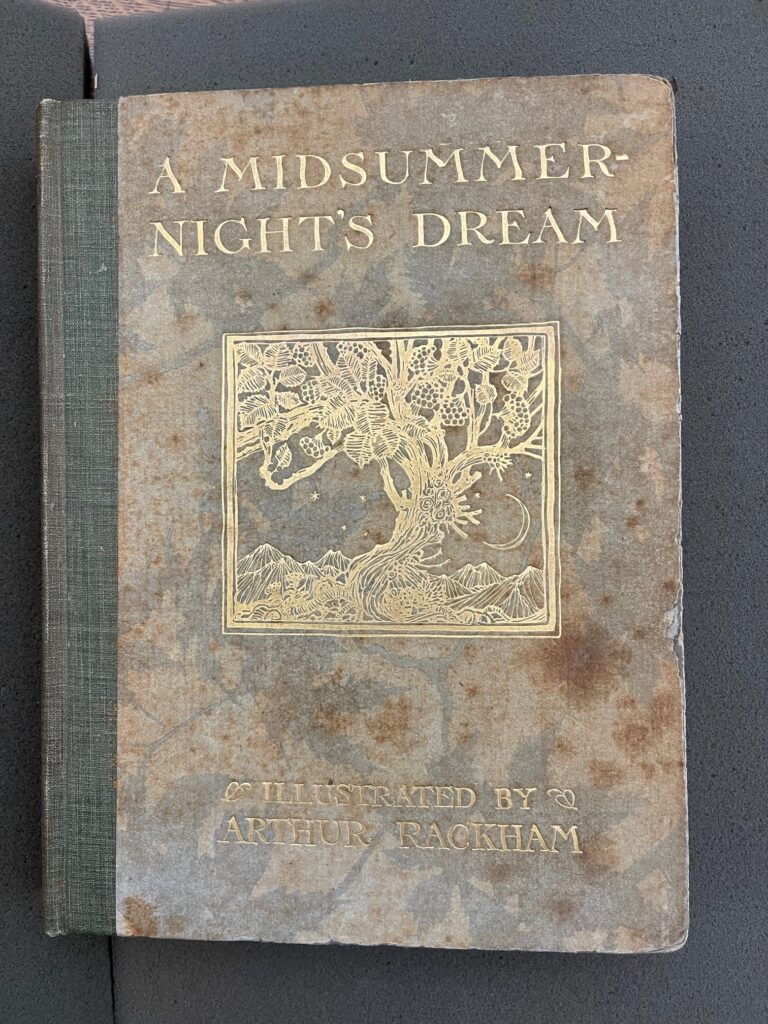
The first thing that struck me was the exquisite, embossed gilt illustration on the front cover. Rather than a traditional plain book cover, the publisher chose to entice readers with a beautifully detailed nighttime scene of Shakespeare’s enchanted forest where most of the play is set. This ornate image nicely compliments the all-over decorative leaf patterned fabric cover binding, which in of itself is another nod to the whimsical nature of the play.
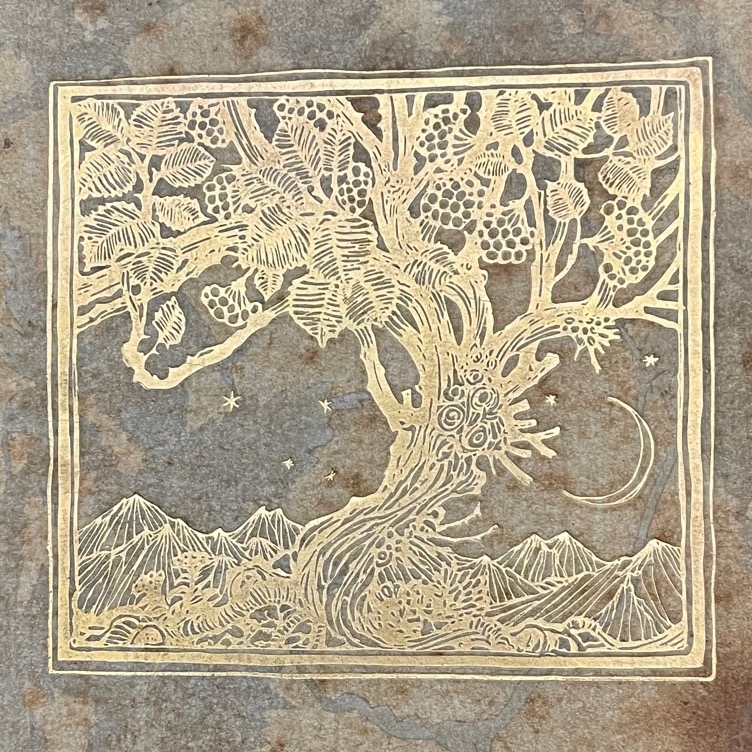

I note there is a deliberate choice to use a strip of dark green publishers’ cloth binding along the spine, which makes this a quarter cover binding. The spine is also embossed with gold lettering detailing the book’s title, illustrator and publisher, but interestingly not the author. I wonder why this is so? The ornamental gold theme continues as I turn the book carefully in my hands and notice that the top edge of the pages are coated in gilt and the discreet color threads of the headband.
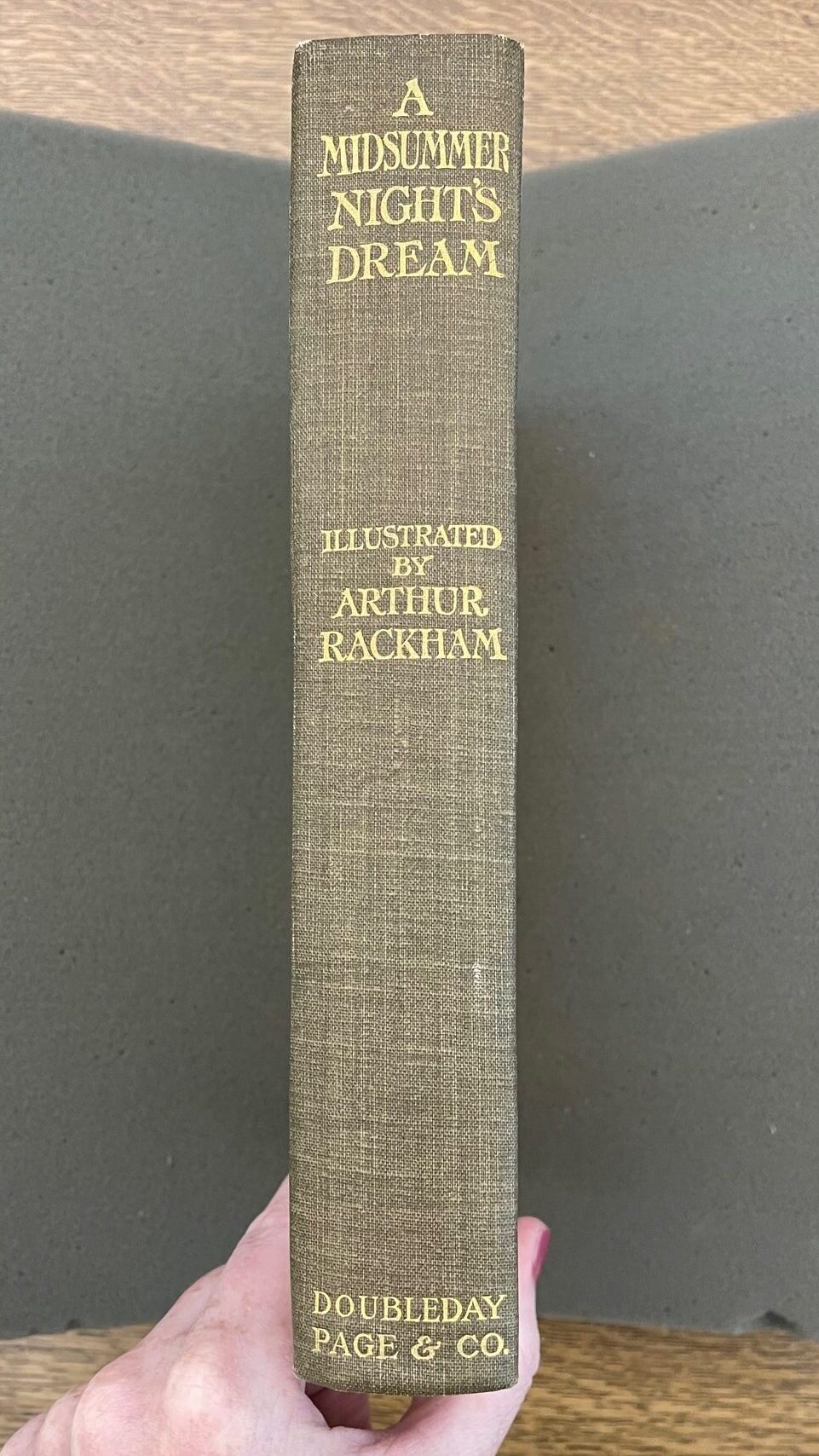
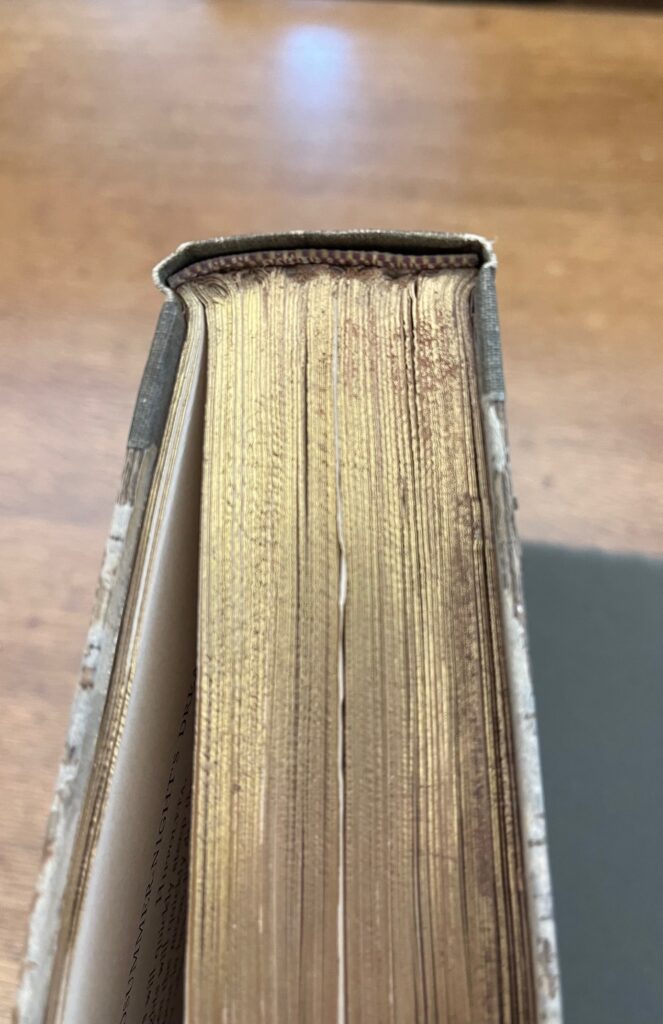
On the inside front board, I discover the bookplates of former owners Helen Estes and Nettie and William Clayton. The decorative quality of these labels are reminiscent of Rackham’s expressive monotone ink drawings which feature throughout the book on the pages of text, including the front title page. I love this personal connection of knowing that this was once a beloved possession of other Rackham admirers.

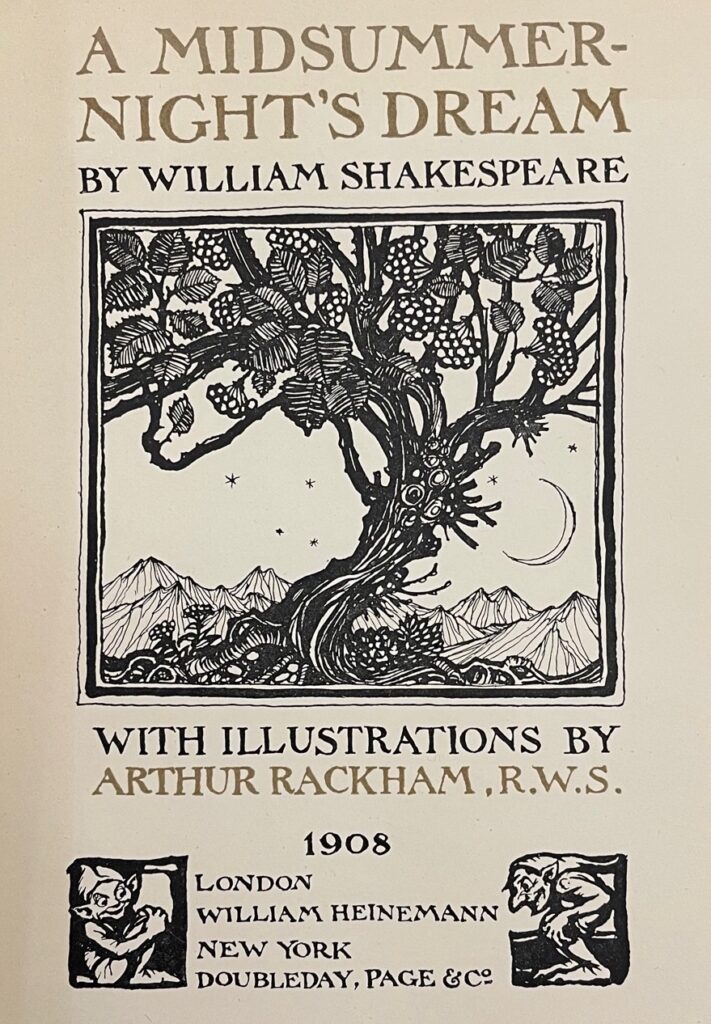
As I begin to leaf my way through the pages, I am immediately stuck but the variety of textures and weight of the pages. This is because I am literally dealing with 4 very different types of paper, which I admit does not lend itself to a continuous flow of reading the book. The end papers and pages which contain the text of the play and ink drawings of Rackham are made of a smooth wood pulp wove paper. This is in significant contrast to the protective light weight ‘sheet leaf’ of tissue guard positioned before all of Rackham’s 40 watercolor and pen ink color plates which are then mounted on noticeably study buff stock card. The illustrations themselves are printed onto a smooth type of paper with a subtle satin shine finish. While I am enjoying being swept away into the mystical world of Rackham, I am not sure how I feel about the tactile experience of leafing through the book itself. I am finding it rather awkward and cumbersome, which is something I plan to explore more.

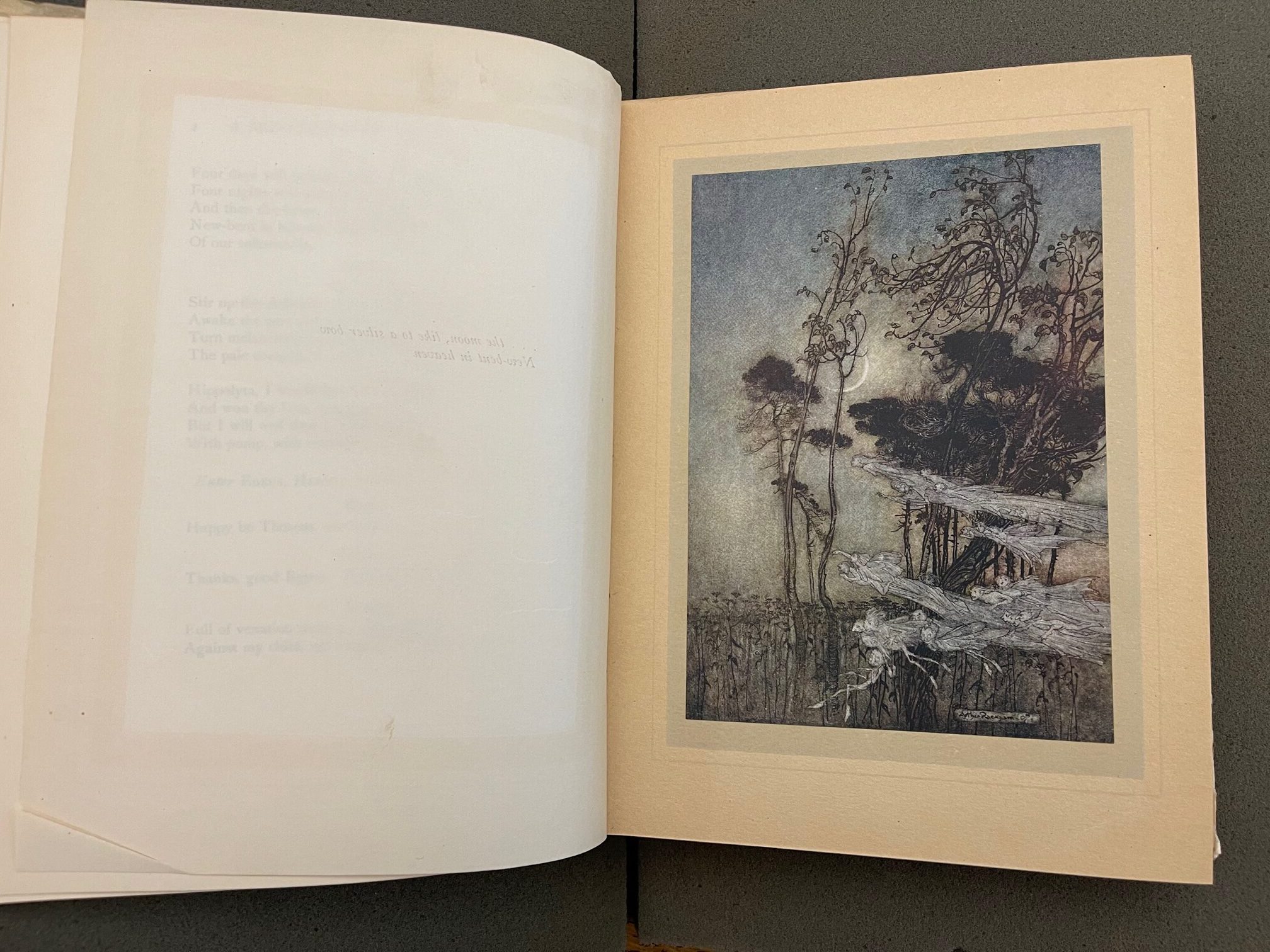
The dimensions of the entire codex are: 26 cm l x 18 cm w x 3.7 cm d, which would make it a quarto. The height of the book pages are a fraction shorter at 24.2 cm, but the width is the same at 18cm. The mounted watercolor print illustrations measure 17.7 cm l x 12.5 cm w. I am intrigued as to why the choice was made to present the plates this way instead of inserting a full-size print page into the codex. Ultimately, how does this impact the visual and tactile experience of the reader/viewer?
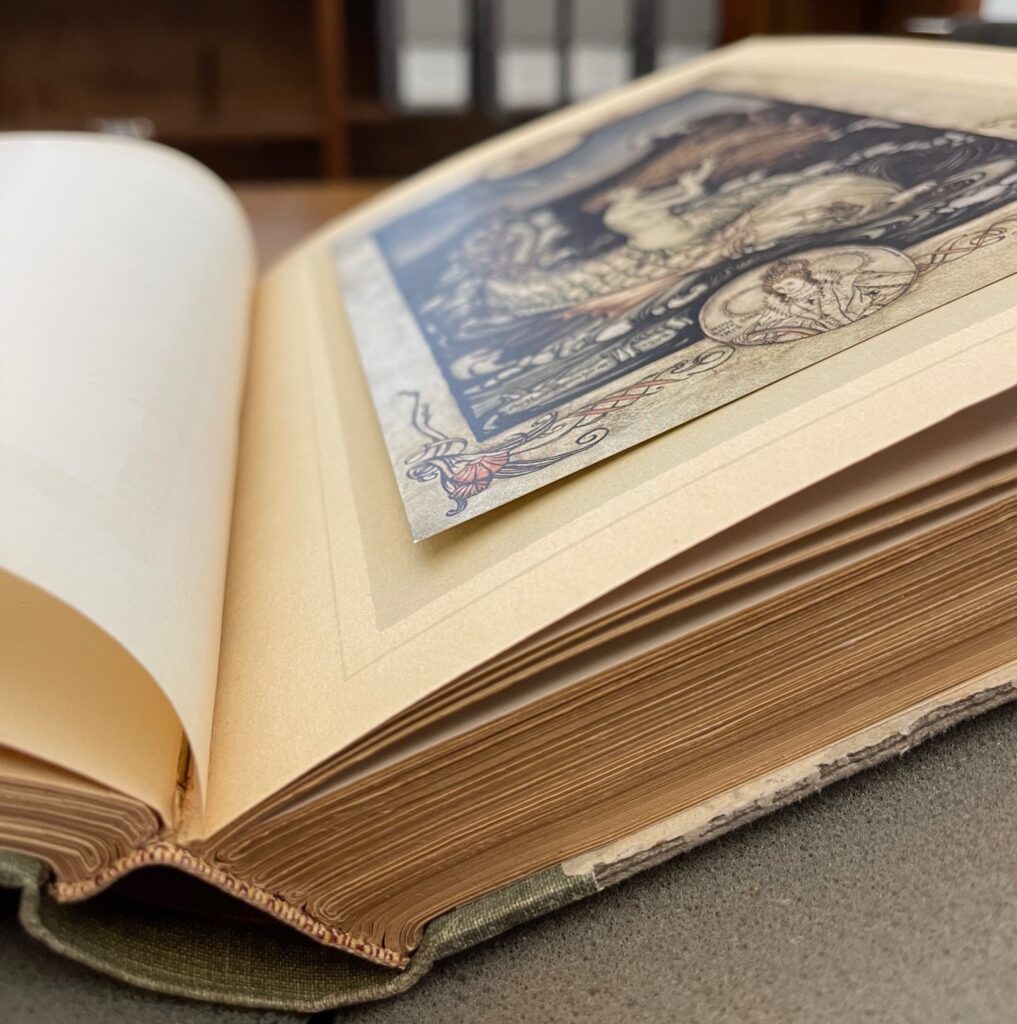
As for the structure of the codex, I was able to determine that the signatures are secured with case bound book binding. Smooth wove end papers are neatly glued to the insides of the upper and lower boards, which themselves have been covered with the patterned cloth fabric as described earlier.
So far I have frustratingly failed to determine how many signatures make up the text block. The more time I spend with this book I suspect that repair work has been done to it, which is complicating the calculations of bundles of pages. As I examine the outside edge of the text block, I can see that the papers edges are not laying completely smooth and flat. Also, to complicate matters, there is not a consistent repeated order of how the different types of paper are arranged. For example, I wish it was as simple as: 1 x wove paper, 1 x tissue guard, 1 x card stock, and repeat. The sequence is instead erratic from one signature to the next. In one I counted 14 smooth wove pages grouped together, and the in the next there was a group of 4. I suspect that Rackham did not want to use a formula for the arrangement of image and word, rather he chose to illustrate significant moments of the play which inspired him. I also detected that some pages are inserted and secured with paste or stitched in (as seen below) as individual folios.
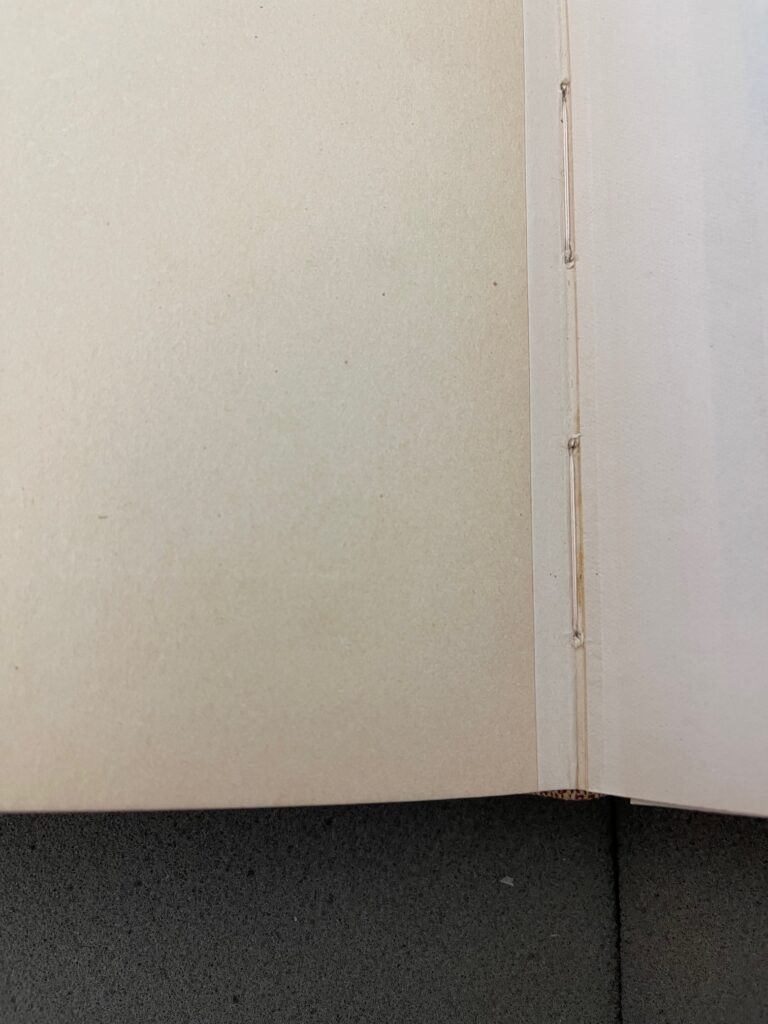

The combination of multiple thicknesses of paper and card does mean there are complications with the structural functionality of the book signatures. Unfortunately, this is quite evident here where the beautifully designed ‘Fairy Song’ scene is divided by the folded edge of the pages along the center.
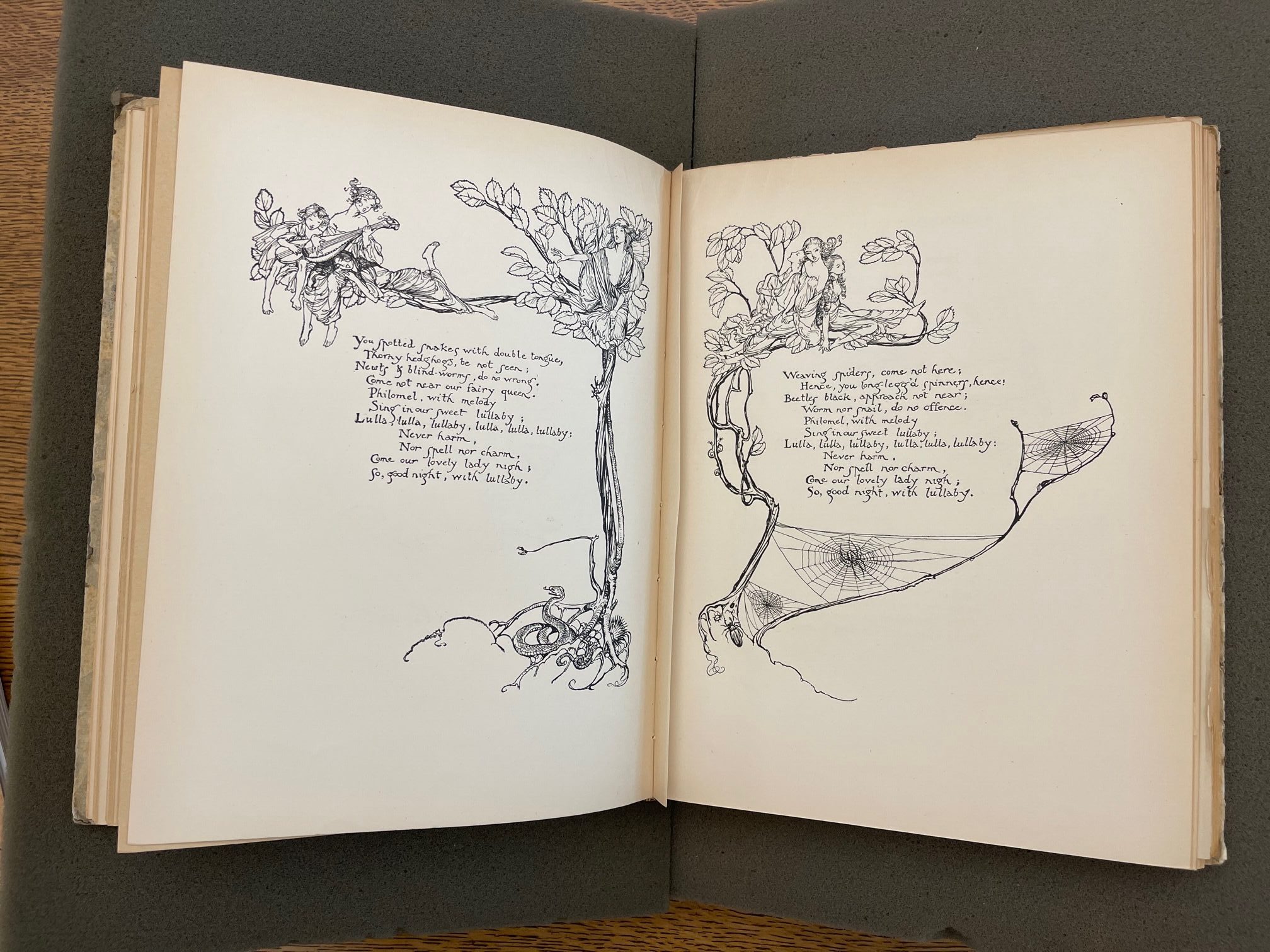
While I am so excited to continue exploring the pages of my ‘pet book’ and especially the relationship and balance between the text and image. I am also quite perplexed by the functionality of this beautiful codex. Some of the mysteries I wish to solve are:
- Was the goal of the publisher to showcase a collection of Arthur Rackham’s illustrations with William Shakespeare’s written word playing a supporting role?
- How does the structure of this book impact the visual/tactile experience of the reader?
- And how many signatures are actually in this book!
Physical Description:
[6], 134 pages, 40 unnumbered leaves of plates; ill 40 color plates; 26 cm
Signature Statement:
Unknown
Material Description:
Black ink text and prints on smooth wove wood pulp paper, 40 illustrated watercolor and ink color plates mounted on buff stock card, all protected with captioned tissue guards. Quarter cloth publishers binding with patterned leaf fabric cover and ornamental stamped gilt decoration to spine and on front cover illustration. 26cm l x 18cm w. x 3.7cm d.

